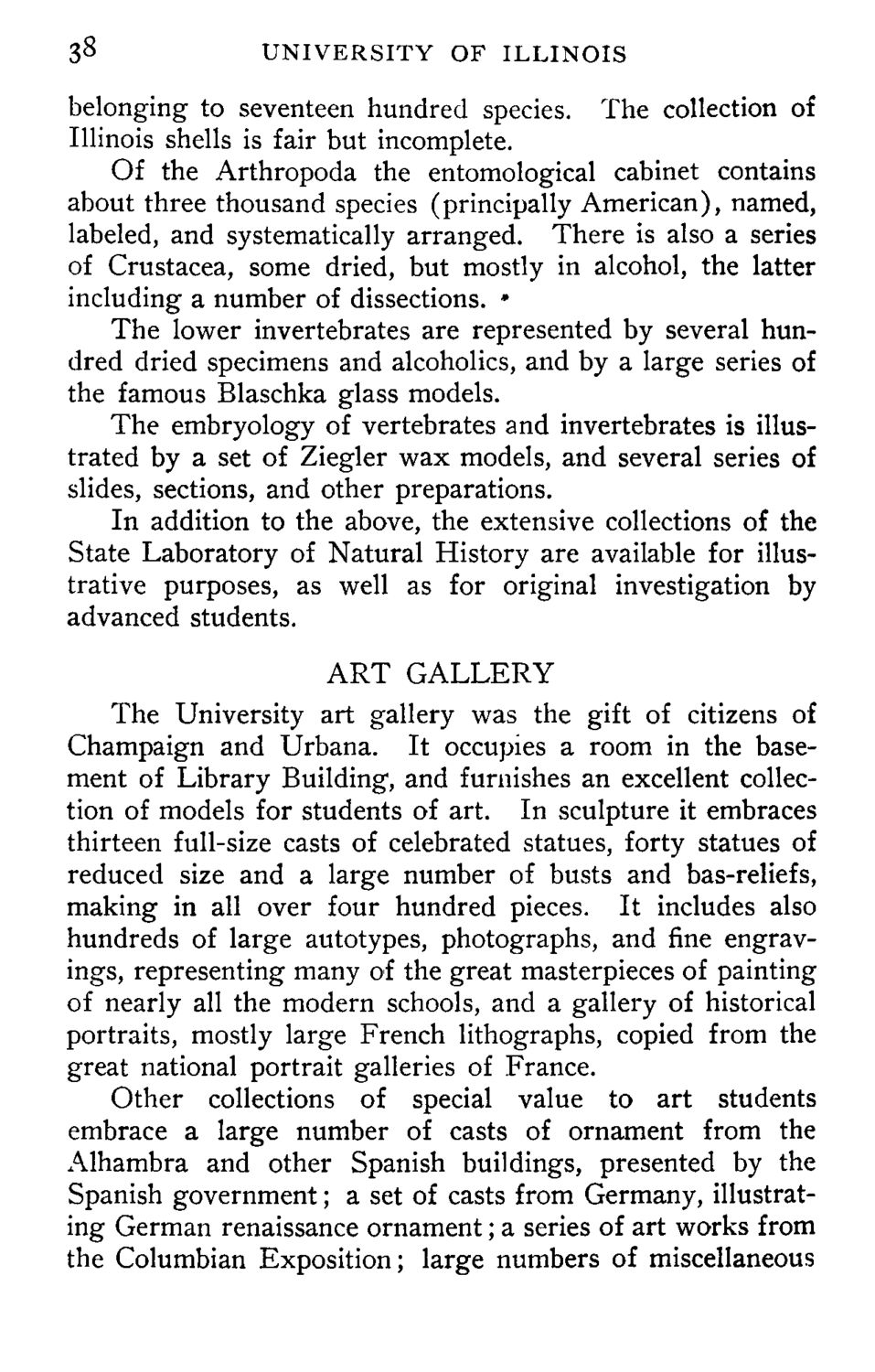| |
| |
Caption: Course Catalog - 1899-1900
This is a reduced-resolution page image for fast online browsing.

EXTRACTED TEXT FROM PAGE:
38 UNIVERSITY OF ILLINOIS belonging to seventeen hundred species. The collection of Illinois shells is fair but incomplete. Of the Arthropoda the entomological cabinet contains about three thousand species (principally American), named, labeled, and systematically arranged. There is also a series of Crustacea, some dried, but mostly in alcohol, the latter including a number of dissections. • The lower invertebrates are represented by several hundred dried specimens and alcoholics, and by a large series of the famous Blaschka glass models. The embryology of vertebrates and invertebrates is illustrated by a set of Ziegler wax models, and several series of slides, sections, and other preparations. In addition to the above, the extensive collections of the State Laboratory of Natural History are available for illustrative purposes, as well as for original investigation by advanced students. ART GALLERY The University art gallery was the gift of citizens of Champaign and Urbana. It occupies a room in the basement of Library Building, and furnishes an excellent collection of models for students of art. In sculpture it embraces thirteen full-size casts of celebrated statues, forty statues of reduced size and a large number of busts and bas-reliefs, making in all over four hundred pieces. It includes also hundreds of large autotypes, photographs, and fine engravings, representing many of the great masterpieces of painting of nearly all the modern schools, and a gallery of historical portraits, mostly large French lithographs, copied from the great national portrait galleries of France. Other collections of special value to art students embrace a large number of casts of ornament from the Alhambra and other Spanish buildings, presented by the Spanish government; a set of casts from Germany, illustrating German renaissance ornament; a series of art works from the Columbian Exposition; large numbers of miscellaneous
| |